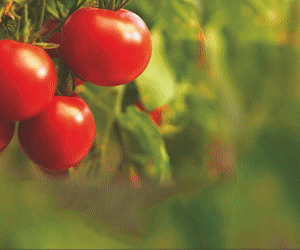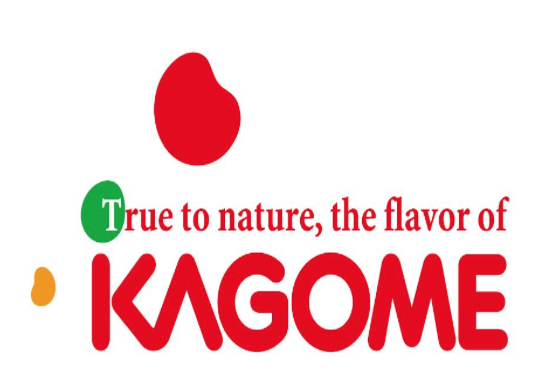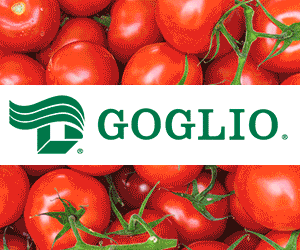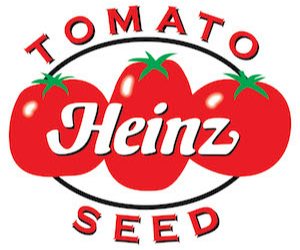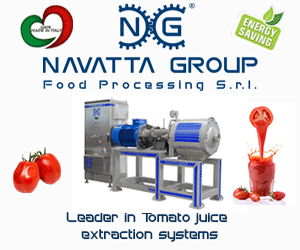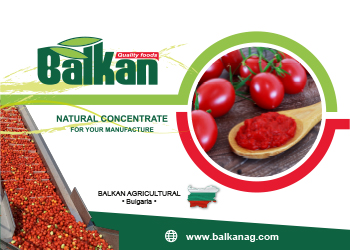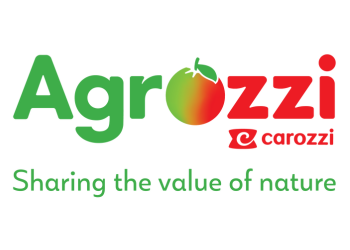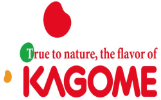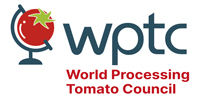According to an INRAE publication published mid-August 2020, “a meta-analysis of the genomes of 775 tomato varieties has identified avenues for selection in order to improve their organoleptic quality.” “From a metabolic point of view, the flavor is mainly due to the contents of sugars, organic acids and the composition of volatile aromas. The genes which code for these metabolites have so far not been studied very much,” stated Mathilde Causse*, Research Director at INRAE and co-leader of the DADI team (Diversity and Adaptation to Determine Integration) for tomatoes. So in order to better understand the genetics of taste components, researchers from INRAE carried out a meta-analysis of existing studies to investigate the link between different phenotypic traits (i.e. observable characteristics), such as color or texture for example, and genetic variations.
In total, information from 775 tomato varieties and more than two million minor genome variations was analyzed. “This meta-analysis has identified genes that could be involved in the flavor of tomatoes and that deserve to be characterized at a functional level,” commented the researcher. The study highlighted 305 phenotype-genotype associations for fruit content in terms of sugars, acids, amino acids and volatile compounds related to aromas. “By selecting the relevant combinations of alleles, it would therefore be possible to respond positively to the flavor preferences of consumers while reducing the presence of certain unfavorable compounds," she surmised.
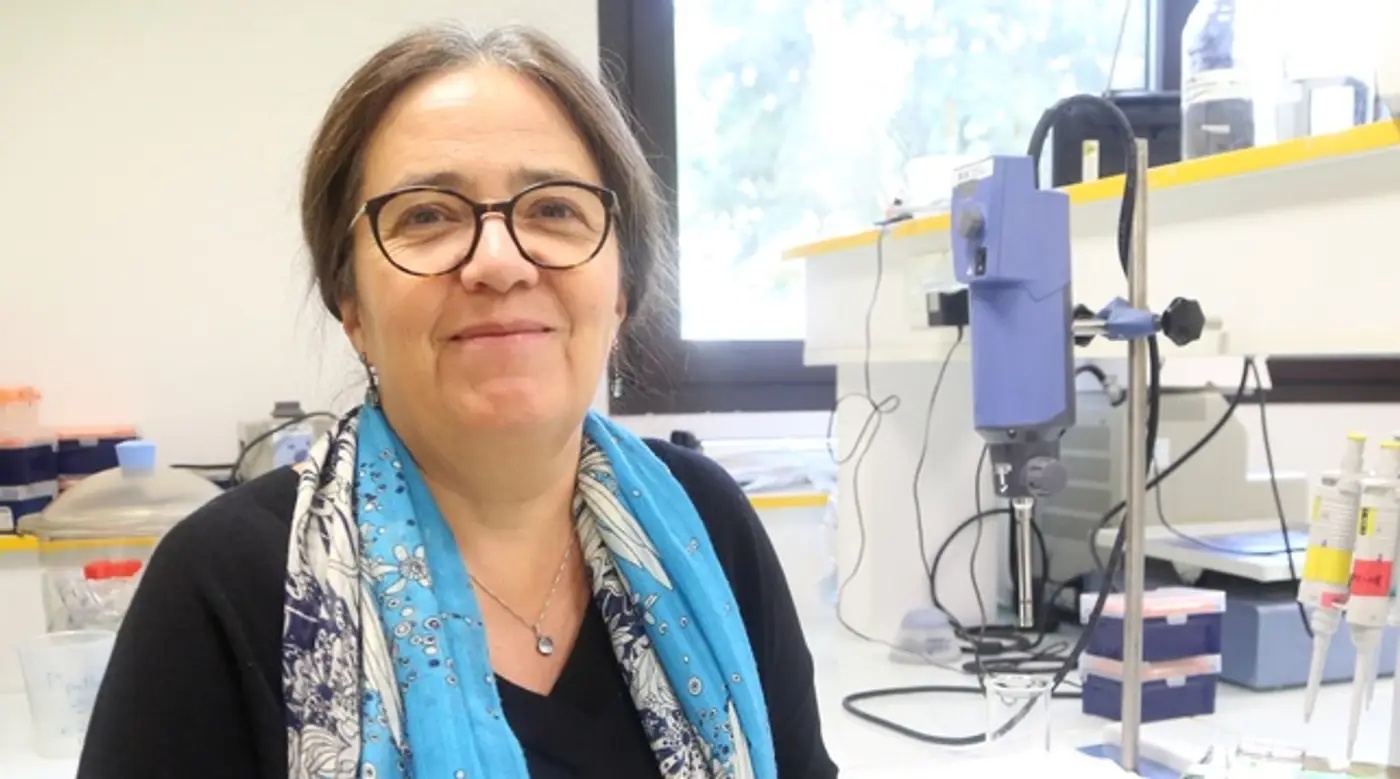 More than two million minor variations of the tomato genome were analyzed in order to identify the genes involved in flavor.
More than two million minor variations of the tomato genome were analyzed in order to identify the genes involved in flavor.
These results will be used for future varietal selection projects by identifying the most interesting DNA sequences for the organoleptic qualities of tomatoes. “This meta-analysis was possible because the data used, although produced by other scientists, has been made available in ‘open access’ and is therefore reusable by other researchers,” explained Mathilde Causse. This pattern of making data openly available is part of the FAIR initiative (Findable, Accessible, Interoperable, Reusable), which consists in promoting the discovery, easy access, interoperability and reuse of data produced by researchers. This initiative, supported by INRAE, makes it possible to implement powerful meta-analyzes such as this one, and contributes to the transparency of science.
Both for table-tomatoes and for crops grown as raw material for industrial processing, the essential recovery of flavor that underpins the work of Dr. Causse's team is not a new cause. More and more work has been devoted in recent years to this request, expressed both by professionals and consumers, in an effort to reconnect with flavors lost over several decades of varietal improvement focused on more easily quantifiable criteria. The issue was already topical about ten years ago. Indeed, the comments made by Prof. John (Jay) Scott* (professor of horticulture at the University of Florida), in a 2012 presentation summarize the basic questions and problems that still need to be dealt with by experts, growers and all the operators working on the development of tomato varieties with improved flavor.
“Many consumers are dissatisfied with commercially grown tomatoes and think tomato breeders focus only on traits other than flavor, such as yield, shipping ability, and disease resistance. This talk provides some insights into the intricacies and realities required to develop and market tomato varieties with improved flavor. The components of tomato flavor are presented, along with some of the major constraints to improving these in different types of tomatoes.”
Prof. Scott was interested in the relative importance given by the different industry operators to the criteria that each of them considers are essential for producing a quality tomato. The dozen or so characteristics selected revealed some common points and above all a clear divide between upstream needs and downstream expectations. Thus, appearance, firmness and resistance of the fruit over time, which are of interest to both growers and consumers, are clearly opposed to the size of the fruit, the yield and the resistance to diseases, which remain concerns shared only by growers.
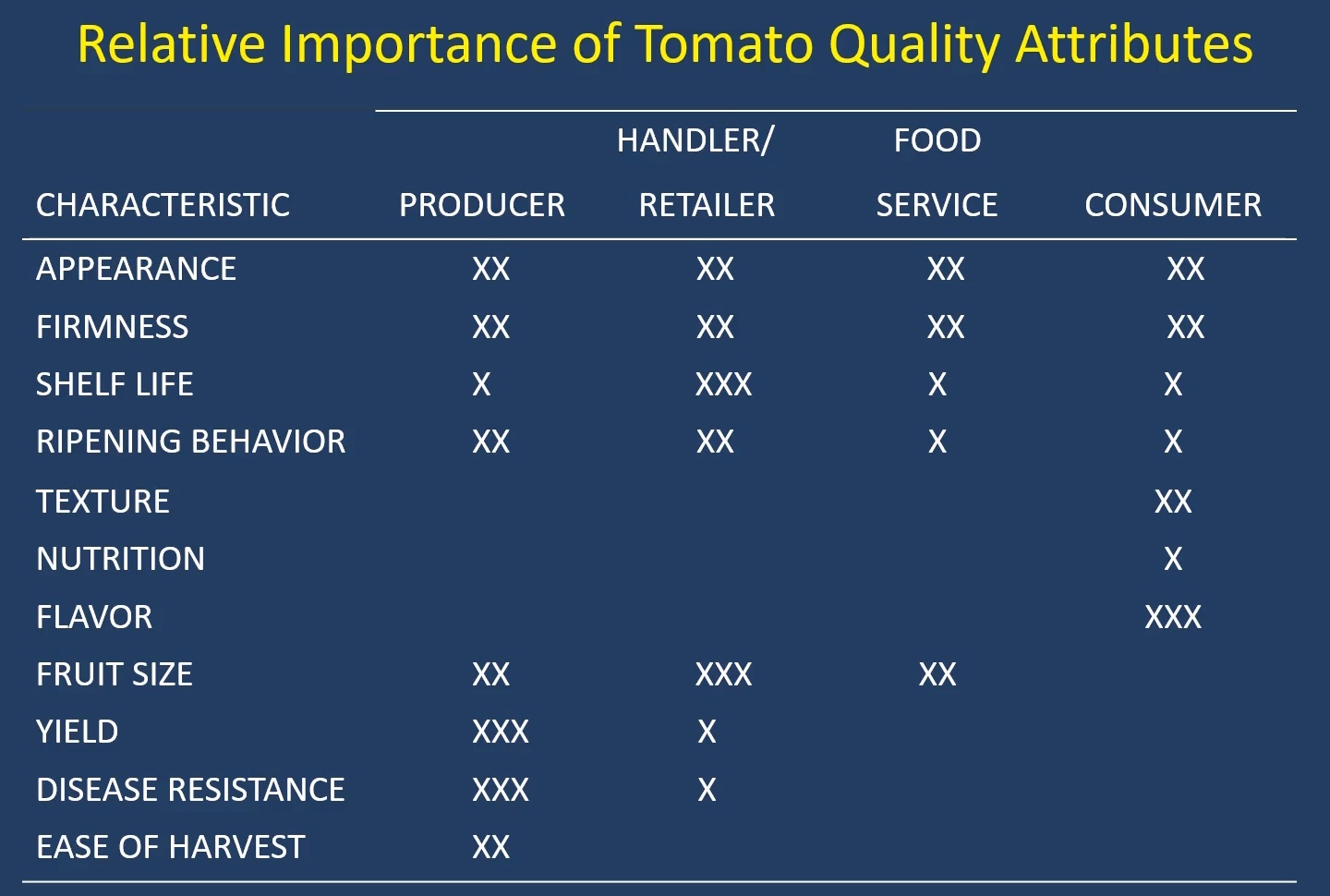
“Dissatisfaction” with tomatoes bought in the store may result from a comparison with those grown on a small scale in home gardens, which are also not subjected to transport. Recollection of quality and flavor may also not always be reliable and, in addition to transport conditions, both refrigeration and consumption of tomatoes before their optimum ripeness can negatively affect taste. Ultimately, such an assessment is clearly subjective, as each consumer may have a different perception of what a “good tomato” should taste like.
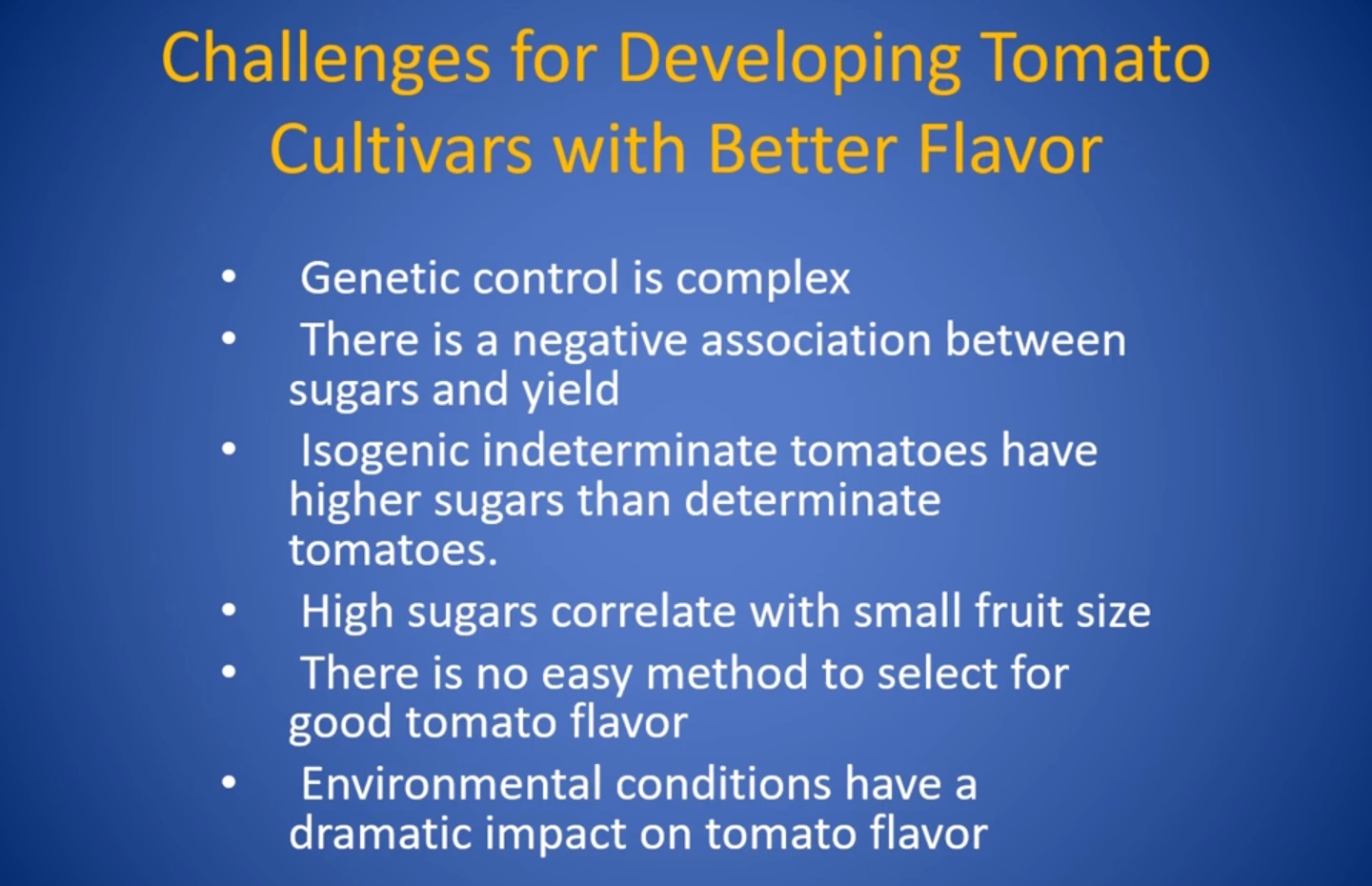
Beyond these questions and before devising a production and marketing plan, breeders should consider the issue of acceptability by different intermediaries and by end consumers of a higher price for a better flavor.
If improved flavor is unanimously recognized as warranting a price increase, then the work of breeders can begin. But as Professor Scott underlined, “the challenges are numerous,” among which should be underlined the complexity of the genetic control of organoleptic characteristics, the antinomy between sugar content and agricultural yield, the higher sugar content provided by isogenic varieties with indeterminate growth than by determinate varieties, the correlation between a high sugar content and a reduced size of the fruit, the absence (in 2012) of a practical method of selection for a satisfactory flavor, the considerable impact of environmental conditions on flavor, etc.
Ten years ago, scientists at the University of Florida put forward several possible breeding approaches designed to improve the flavor of tomatoes, most of which consisted in incorporating genetic material aimed at influencing the sugar content, taking advantage of the flavor of heirloom varieties, using maturation moderator genes (rin, nor, alc genes), promoting fragrance (frg genes), and finally seeking better results by recombining the existing genetic material in modern varieties, etc.
In conclusion, Professor Scott explained the difficulties imposed by the limitations of genetics on flavor improvement efforts, as well as the constraints related to the influence of the environment on taste, to selection methods and to the physiology of the fruit, etc. While expressing confidence in the opportunities provided by new breeding technologies, he stated that the discovery of “a silver bullet seemed unlikely at this juncture”, given the current state of knowledge.
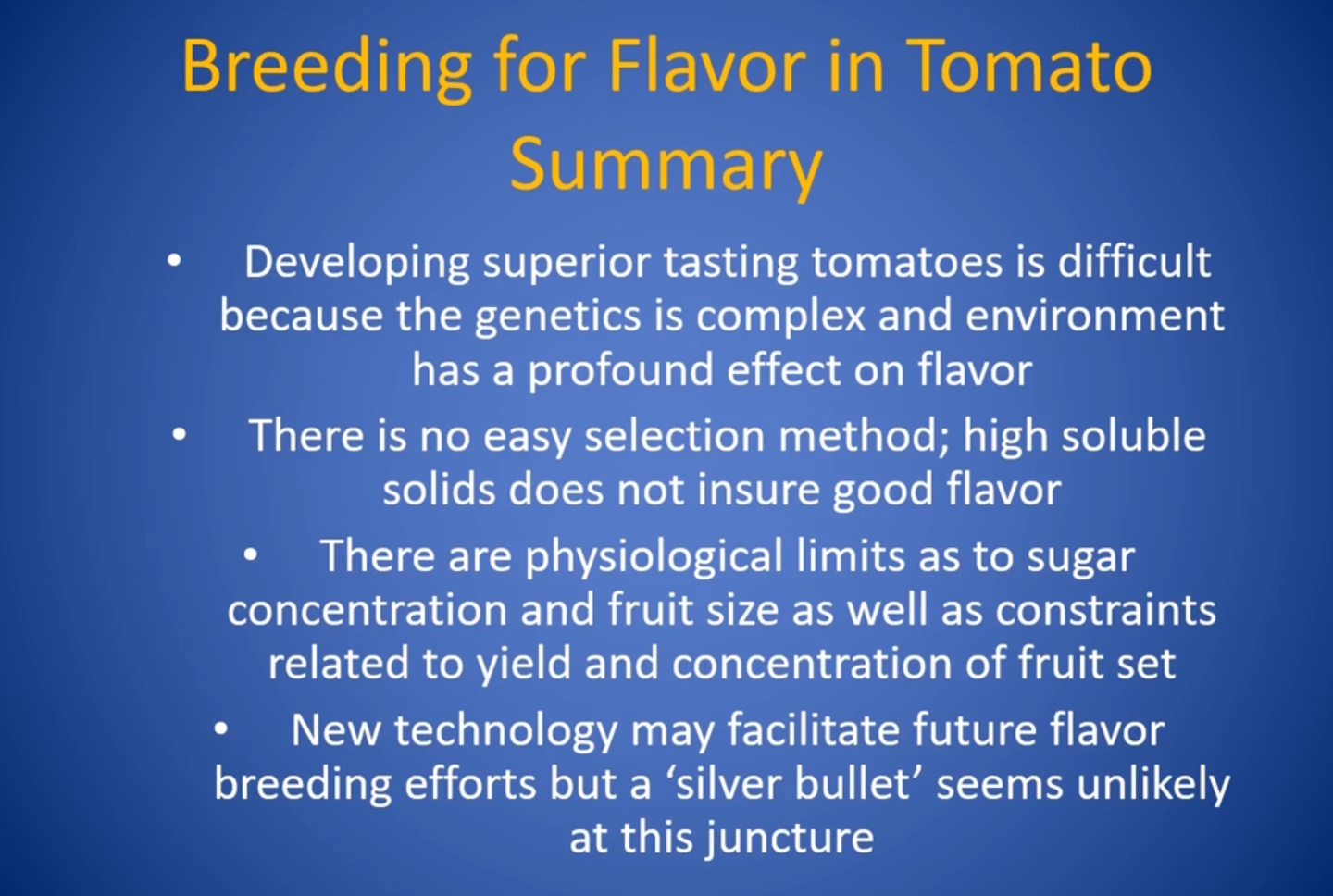
Flavor genes rediscovered
While no miracle solution has been found, decisive steps have been taken over the past ten years, notably thanks to research carried out at the Boyce Thompson Institute (BTI, Cornell University, New York), which has made it possible to obtain the most complete map of tomato DNA ever achieved, with data relating to 725 varieties, both cultivated and wild: a true “pangenome”, since that is what the researchers are calling it.
In a study published in 2019, around 5,000 tomato genes were “found”, which had been “lost” in modern varieties and which will help restore the flavor of currently grown varieties. In addition to improvements in flavor, these genes could help strengthen the resistance of plants to disease and would be more “sustainable” in terms of the environment.
The group, led by Zhagjun Fei, discovered 4,873 new genes and identified a rare version of a gene that makes tomatoes more flavorful, which will help “breeders in their efforts to make tomatoes tastier,” Fei says.
The first genetic map of tomatoes dates back to 2012 and many more have been added since. The BTI study is however the first to extract all these genetic sequences, as well as 166 new ones, and to “identify” the genes absent from the reference genome. “In tomato cultivation,” Zhagjun Fei continued, “the [actors in different sectors] have focused on the characteristics needed to increase production, such as shape and size. So other important genes related to quality and stress tolerance have been lost.”
Researchers eventually identified a rare mutation, called TomLoxC, which helps give tomatoes an “appetizing” flavor, as well as their red color: it is present in 91.2% of wild tomatoes, but only in 2.2% of the oldest cultivated varieties and in 7% of modern ones.
At the same time, Argentinian researchers took an interest in this very question in order to understand why the varieties available on the country's markets were “round, large, and pale, usually bland and had a dull taste.” As a result, scientists from the agronomy department of the University of Buenos Aires (Fauba) and Conicet (Consejo Nacional de Investigaciones Científicas y Técnicas) are conducting a research project to solve this limitation and to increase the reservoir of seeds available for this fruit.
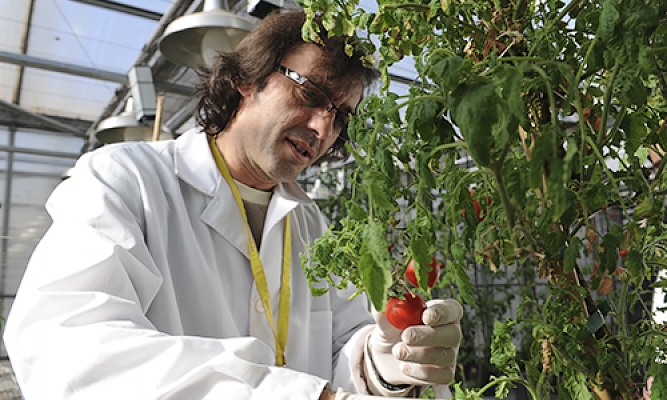 They are trying to recover the germplasm of the old varieties that were consumed habitually in Argentina during the first decades of the 20th century. According to Dr. Fernando Carrari, Conicet researcher and Professor of genetics at Fauba, in the late 19th and early 20th centuries, when “modern” horticulture was established in Argentina, with the arrival of successive waves of Spanish and Italian immigrants, the genetic material that met demand at the time (close markets, seasonality, rapid marketing and low yields) was overtaken by the sudden growth in demand linked to the tenfold increase in population of the country.
They are trying to recover the germplasm of the old varieties that were consumed habitually in Argentina during the first decades of the 20th century. According to Dr. Fernando Carrari, Conicet researcher and Professor of genetics at Fauba, in the late 19th and early 20th centuries, when “modern” horticulture was established in Argentina, with the arrival of successive waves of Spanish and Italian immigrants, the genetic material that met demand at the time (close markets, seasonality, rapid marketing and low yields) was overtaken by the sudden growth in demand linked to the tenfold increase in population of the country.
Prioritized performance
To cope with the demographic explosion, genetic material was incorporated to obtain higher yields under more controlled growing conditions, to the detriment of the organoleptic qualities perceived by the consumer: taste, aroma, texture, appearance.
In the opinion of the person who is considered at national and international levels as a major authority on the tomato industry, Cosme Alberto Argerich, agronomist and coordinator of the specific INTA project for the development of technologies aimed at increasing the competitiveness of tomatoes, “the good taste of tomatoes is generally inversely correlated with the firmness of the fruit. Mechanical harvesting requires good firmness of the fruit to resist the mechanical processes of single-harvest operations. Processing tomatoes are much more like soybeans than fresh tomatoes because they are planted, cultivated and harvested mechanically, all in one pass.”
Moreover, in the words of the expert, “in the case of a fresh tomato, where the flavor can be truly appreciated, the fact that shelf life cannot be accompanied by a satisfactory flavor constitutes a global problem. The tomatoes that are most profitable for growers and the marketing chain are the least tasty.”
On the other hand, “processing tomatoes must undergo, in order to be preserved over time, a method of preservation by heat and temperature, the object of which is to suppress the natural enzymatic and biological processes and to avoid deterioration in a packaging made of the metal, plastic or aluminum that protects it.”
Cosme Argerich points out, however, that “together with other scientists at INTA, they observed cultivars with a high content of sugars and acidity, much more 'tasty' than those which did not contain these associated components. These pear-shaped tomatoes, particularly tasty when they are eaten raw in salads, unfortunately lose some of their interesting qualities during the heating process they must undergo during industrial processing.”
He then added: “We have worked with a processing company on these pear-shaped tomatoes, very rich in sugars and acidity and with a much better flavor, and consumers have absolutely not noticed the difference in taste, […] Argentinian consumers buy according to price, and not according to the quality of the flavor, particularly if it is an industrial product. The market unfortunately does not pay for better quality tomatoes at their fair value.”
Fernando Carrari aims to recover the genetic material cultivated in Argentina at the beginning and in the middle of the last century. The Argentinian team is working to increase the quantity of seeds of each of the 120 different varieties they have received from two foreign germplasm banks (in the US and Germany), which have been reproduced in the university's experimental plots. The project is supported by the Horticultural Chair for crop management of approximately 164 collections (accessions), which are under evaluation.
Some additional data
*Doctor Mathilde Causse is also taking part in the Harnesstom project presented in our article “The Harnesstom Project: to improve the quality of tomatoes".
 At the time of publishing in 2012, John (Jay) W. Scott was Professor of Horticulture at the University of Florida. He was already a specialist in tomato breeding and genetics, specializing in disease and insect resistances, tolerance to genetic disorders, heat-tolerant fruit setting, genetic and environmental effects of fruit flavor and color, and the development of high lycopene germplasm. His very productive tomato-breeding program had resulted in the release of 35 varieties and breeding lines. His talk was sponsored by The Morning Star Company. Today, he is Professor emeritus at the University of Florida/Institute of Food and Agricultural Sciences.
At the time of publishing in 2012, John (Jay) W. Scott was Professor of Horticulture at the University of Florida. He was already a specialist in tomato breeding and genetics, specializing in disease and insect resistances, tolerance to genetic disorders, heat-tolerant fruit setting, genetic and environmental effects of fruit flavor and color, and the development of high lycopene germplasm. His very productive tomato-breeding program had resulted in the release of 35 varieties and breeding lines. His talk was sponsored by The Morning Star Company. Today, he is Professor emeritus at the University of Florida/Institute of Food and Agricultural Sciences.
University of Florida:
https://edis.ifas.ufl.edu/topic_a42320990
https://doi.org/10.1094/GROW-TOM-10-12-012
Sources: reussir.fr, planthealthexchange.org, Ansa, freshplaza.it, hortidaily.com, lacapitalmdp.com






 They are trying to recover the germplasm of the old varieties that were consumed habitually in Argentina during the first decades of the 20th century. According to Dr. Fernando Carrari, Conicet researcher and Professor of genetics at Fauba, in the late 19th and early 20th centuries, when “modern” horticulture was established in Argentina, with the arrival of successive waves of Spanish and Italian immigrants, the genetic material that met demand at the time (close markets, seasonality, rapid marketing and low yields) was overtaken by the sudden growth in demand linked to the tenfold increase in population of the country.
They are trying to recover the germplasm of the old varieties that were consumed habitually in Argentina during the first decades of the 20th century. According to Dr. Fernando Carrari, Conicet researcher and Professor of genetics at Fauba, in the late 19th and early 20th centuries, when “modern” horticulture was established in Argentina, with the arrival of successive waves of Spanish and Italian immigrants, the genetic material that met demand at the time (close markets, seasonality, rapid marketing and low yields) was overtaken by the sudden growth in demand linked to the tenfold increase in population of the country.  At the time of publishing in 2012, John (Jay) W. Scott was Professor of Horticulture at the University of Florida. He was already a specialist in tomato breeding and genetics, specializing in disease and insect resistances, tolerance to genetic disorders, heat-tolerant fruit setting, genetic and environmental effects of fruit flavor and color, and the development of high lycopene germplasm. His very productive tomato-breeding program had resulted in the release of 35 varieties and breeding lines. His talk was sponsored by The Morning Star Company. Today, he is Professor emeritus at the University of Florida/
At the time of publishing in 2012, John (Jay) W. Scott was Professor of Horticulture at the University of Florida. He was already a specialist in tomato breeding and genetics, specializing in disease and insect resistances, tolerance to genetic disorders, heat-tolerant fruit setting, genetic and environmental effects of fruit flavor and color, and the development of high lycopene germplasm. His very productive tomato-breeding program had resulted in the release of 35 varieties and breeding lines. His talk was sponsored by The Morning Star Company. Today, he is Professor emeritus at the University of Florida/